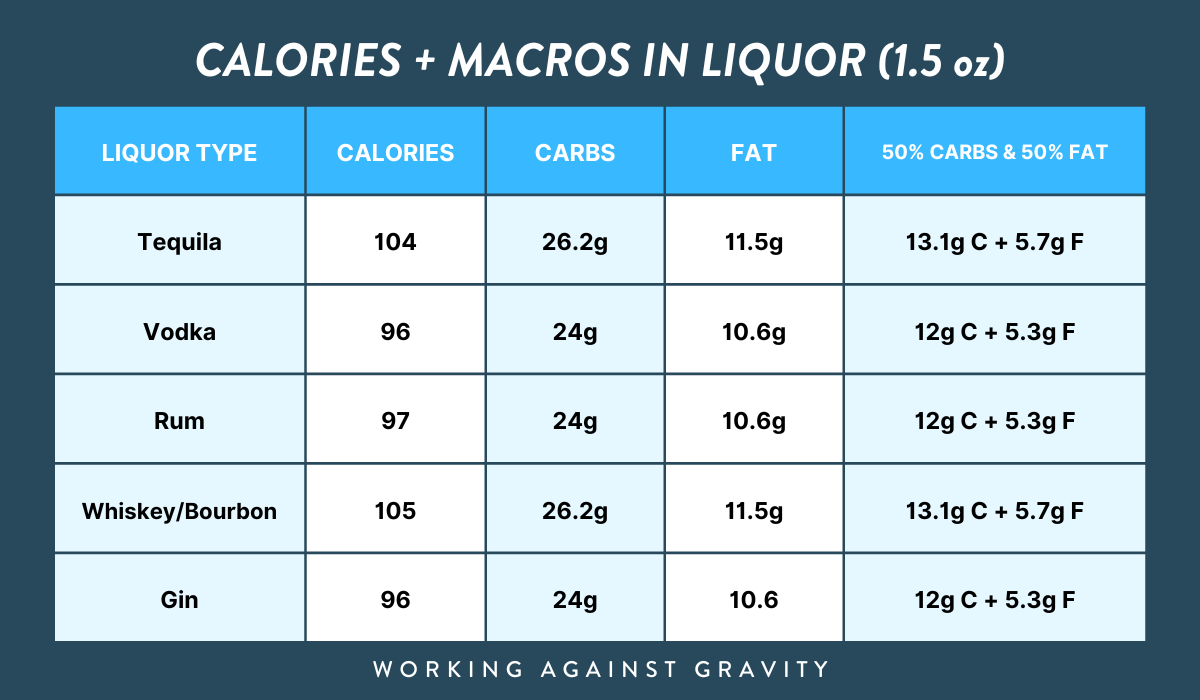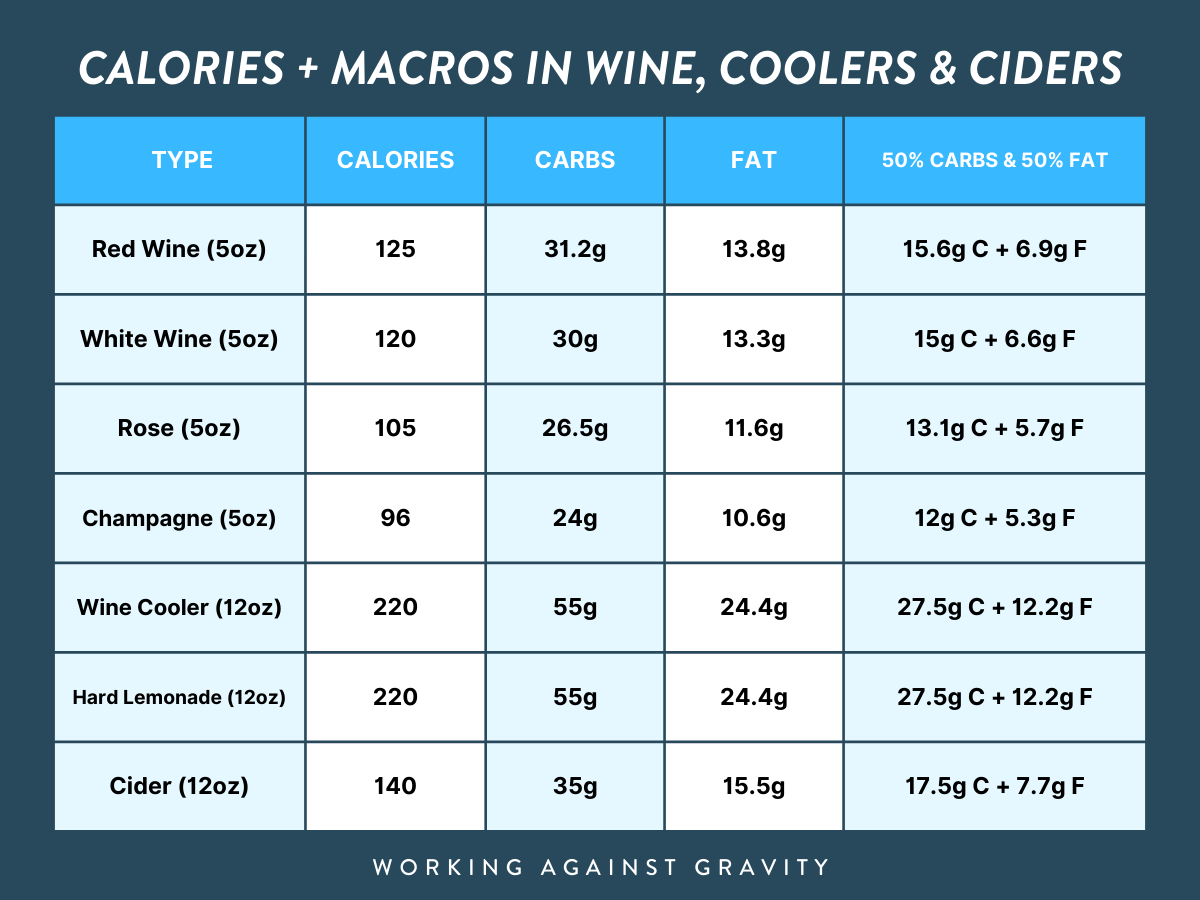Beer, wine, margaritas… Oh my!
If you’re a macro tracker, you’ve likely wondered, “is alcohol a macronutrient?”. And, if you’re a margarita girl like me, you’ve likely wondered how to count that Taco Tuesday marg into your day and still reach your goals.
There is often a lot of confusion regarding how to track your alcoholic beverages correctly. At WAG Nutrition, we help you figure out how to track alcohol correctly and navigate the challenge of balancing your nutrition choices in an enjoyable, sustainable way that also gets you to your goals.
Advertisement
Is Alcohol a Macronutrient?
Although technically considered a macronutrient with its own calorie content, alcohol is not essential for survival. It is not considered one of the three main macros: protein, carbs, and fats (learn about these macros and the basics of counting them here).
There are 7 calories per gram of alcohol; unlike protein, carbs, and fat, the calories from alcohol contain next to no nutritional value.
You’re less likely to feel full after drinking alcohol because the calories you ingest carry no fiber, volume or healthy vitamins and minerals your body needs to thrive.
Should I Count Alcohol Macros?
If you are tracking macros and trying to be as accurate as possible, we recommend counting all your alcoholic drinks in your macros.
Advertisement
Calories - regardless of whether they come from a carrot, a slice of pizza, or a shot of tequila - have to be accounted for. Just because tequila has zero protein, carbs, and fat does not mean it is zero calories (remember, there are still 7 calories per gram of alcohol). The calories from that shot still count toward your total daily calorie intake.
Let's look at the specifics of tracking alcohol in your macros.
How to Track Alcohol Macros
There are 7 calories per gram of alcohol. This is a very dense calorie per gram count, especially compared to the main macronutrients. Only fat, at 9 calories per 1 gram, is denser than alcohol calories.
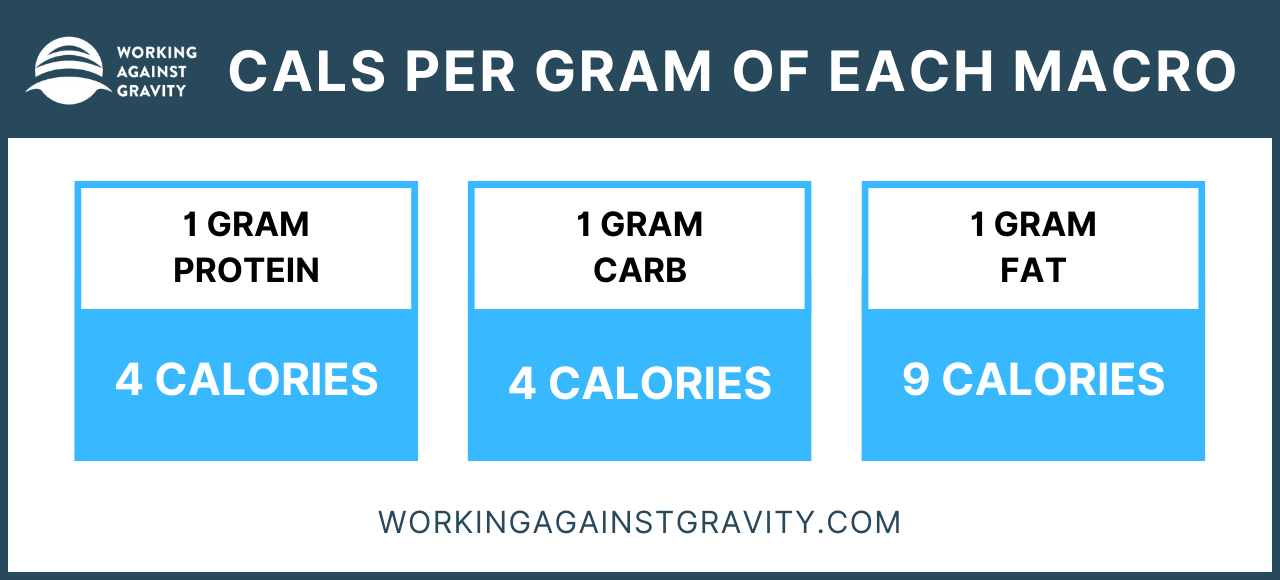
Reading Alcohol Nutrition Labels
Wondering why you don’t always find nutrition labels on your alcoholic beverages? Unlike food labeling regulated by the FDA, alcohol is regulated by the Alcohol and Tobacco Tax and Trade Bureau (TTB), which doesn’t require nutritional labeling.
Advertisement
When you do find a label on one of your drinks, it’s time to ask some questions. Let’s look at the label below as an example.
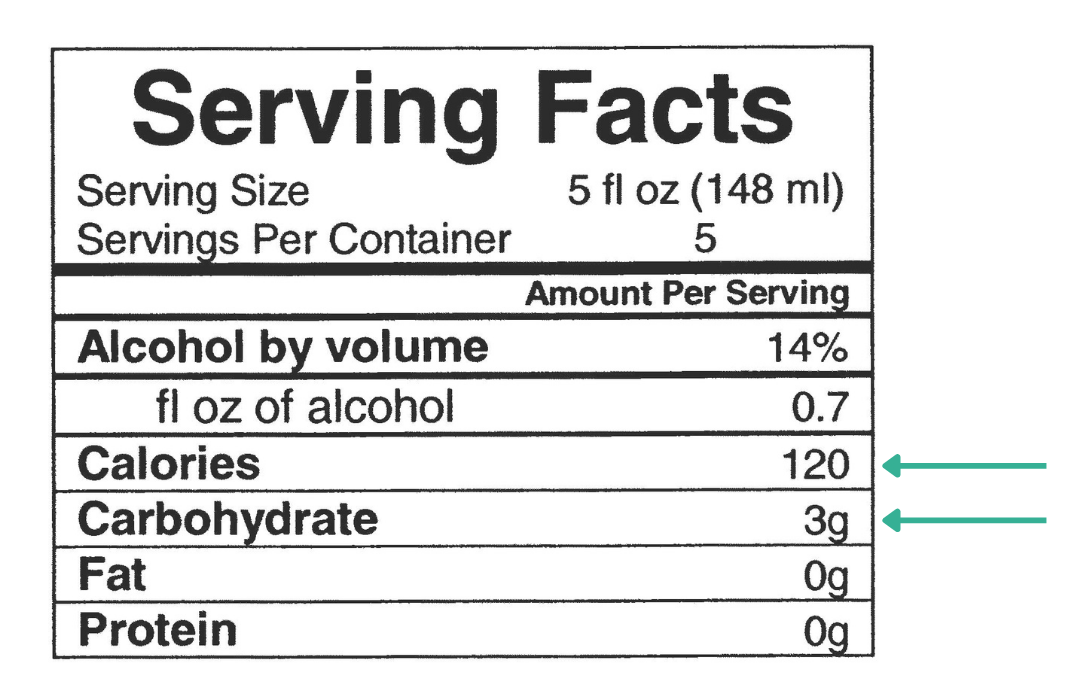
There are only 3g of carbs listed on this alcohol nutrition label. Since there are 4 calories per gram of carbohydrates, this means that if you tracked this as 3g carbs, you’d only account for 12 calories. But there are 120 calories in the drink. This means you’re leaving 108 calories unaccounted for.
If this happens for multiple drinks, multiple nights per week, those calories add up quickly. And, if you have specific weight and fat loss goals, this can drastically slow progress and increase frustration.
So, how can you track alcohol correctly? Let’s dig into it…
Advertisement
Tracking Alcohol as Carbs or Fats
To track alcohol when tracking macros, allocate the calories in alcohol to carbs and/or fats. Never substitute alcohol for protein… Protein is too important, and that’s just cheating! ;)
Now that you understand the concept behind tracking alcohol, the next question that might pop up in your head is: “should I track my alcohol as carbs or fats?”
Should I Track Alcohol as Carbs, Fats, or Both?
When determining whether to track your alcohol calories as carbs, fats, or a portion of both, looking ahead at your day and your overall plan is essential for success.
Which macro will be easier for you to “save” so you can make room for a few beers during your Fourth of July BBQ? Which macro do you naturally eat more of? If saving a few grams of fat is easier, you may track your drink as fat. If you think it will be easier to save some carbs, then you may opt to track your beer as carbs. Or a mix of both.
The bottom line: planning is your best friend when accounting for the macros in alcohol!
Advertisement
How Do You Calculate Carbs in Alcohol?
With the alcohol calories from your drink, do the math:
Take the total amount of calories in your alcoholic beverage and divide by 4. Remember, we divide by 4 because carbs contain 4 calories per gram.
Here is an example using a 200-calorie drink:
200 calories / 4 cals per gram of carbohydrates = 50 grams of carbs.
How Do You Calculate Fats in Alcohol?
Take the total amount of calories in your alcoholic beverage and divide by 9.
Here is an example using a 200-calorie drink:
200 calories / 9 cals per gram of fat = 22.2 grams of fat.
Advertisement
What if you want to track some of it as carbs and some as fat? We have a tool to help!
The WAG Nutrition Alcohol Macro Calculator
The WAG Alcohol Macro Calculator takes the guessing out of the equation and shows you exactly how to count alcohol into your macros with no second-guessing.
We’ve also worked closely with our friends over at MacrosFirst to incorporate alcohol macro tracking into their food-tracking app. This is one of many reasons we encourage our members to use MacrosFirst (it also syncs with our online coaching software, Seismic!)
Pro Tip: No matter what tracking app you use, if your drink does not have a nutrition label and you search your app for an entry, make sure you use the calculation methods outlined here to track your alcohol as carbs/fats. Do not pick an entry that only includes the total calories, or you will not correctly account for your macros and will go over your daily intake.
Using ABV (Alcohol By Volume) & Size to Calculate Alcohol Macros
This is the default setting of our free online macro calculator. To use this conversion option, you will need to know the volume of alcohol in ounces (oz). If you weigh your drink in grams or milliliters, convert it to ounces.
Advertisement
Enter the amount in the ounces section. It is set to 12 oz. by default. In the example below, we are using a 5 oz. a glass of wine.
You will see the numbers for Carbs and Fats update automatically (circled in yellow).
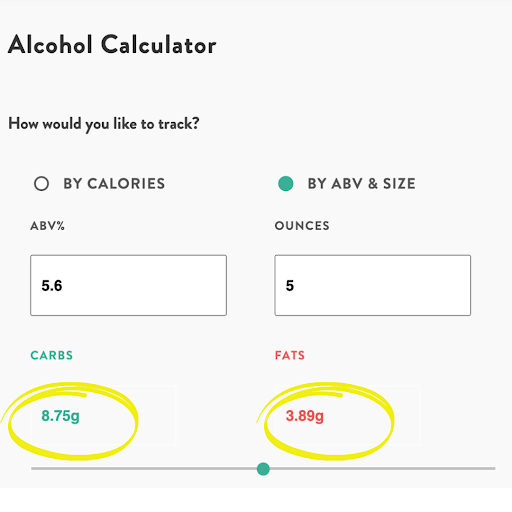
Using Calories to Calculate Alcohol Macros
To allocate alcohol to your macros using a certain amount of calories, switch to the "by calories" option. You will see in the graphic below it is set to 120 calories by default.
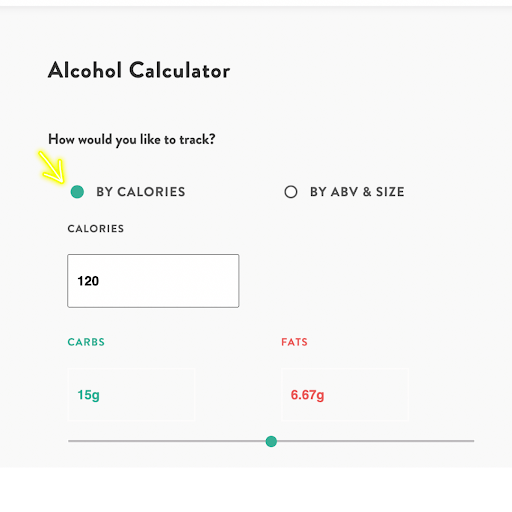
Advertisement
Update the default calories to the ones you would like to allocate to alcohol. In this example, we use 120 calories for 5 oz. of a particular wine. You will notice the numbers for carbs and fats update automatically.
Now you determine if you want to allocate the alcohol to your carbs, fats, or a mixture of both. You can adjust the allocation using the sliding scale.
To allocate to a combination of the two, move the scale between carbs and fats until you’re happy with the allotment.
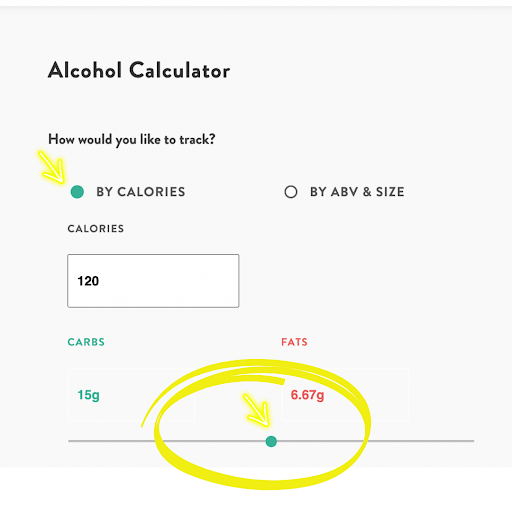
To allocate 100% to fat, slide the scale to the right.
Advertisement
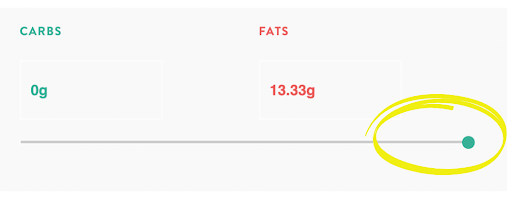
To allocate 100% to carbs, slide to scale to the left.
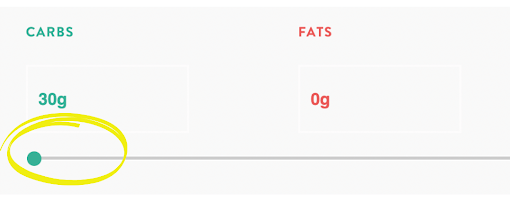
To enter your new macros into your tracker, you can do a few things:
- Create a new food for your drink. This is especially helpful if you have a go-to!
- Search “Carb macros” and/or “Fat macros” in your app and enter the correct portion size (make sure the entry you find shows 4 calories per gram of carbohydrate and 9 calories per gram of fat!)
- Use the quick-add function in your app to add the macros for your drink.
Want to see how to use the WAG calculator in action? We got your back! Here is a step-by-step tutorial on our WAG Live YouTube channel.
Advertisement
We know all the math that comes with tracking alcohol can get confusing; that’s why our one-on-one nutrition coaches are always here to help and answer questions about properly tracking your favorite adult beverages. A little help can go a long way!
Tips for Tracking Alcohol Macros
Now that tracking alcohol macros makes a little more sense and you have your handy WAG Online Alcohol Macro Calculator to make it easy let’s explore some actionable tips for tracking alcohol macros.
Drinking Cheat Sheet
Out to dinner? At a party? Being familiar with the different sizes and volumes of a specific drink can be super helpful if you need to do some eyeballing. Here is a great visual you can save for future reference.
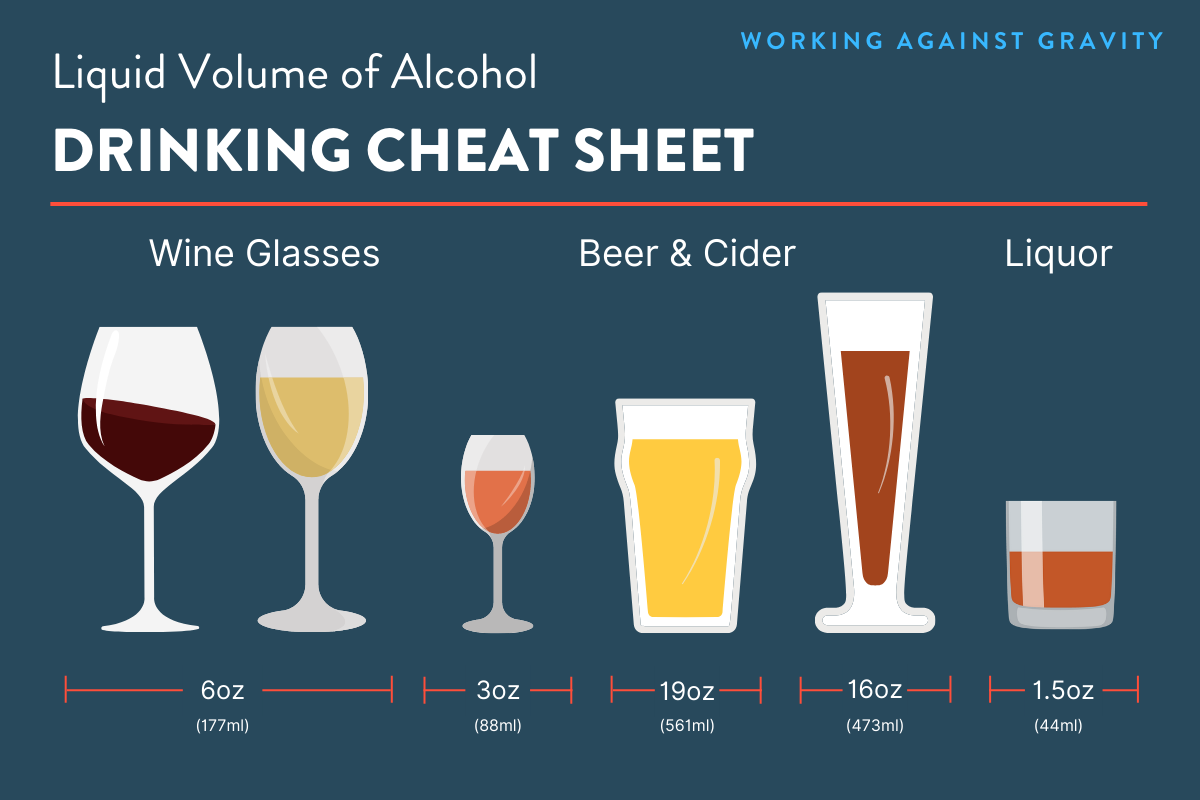
Tracking Macros in Beer, Wine, and Liquor
You can always use the WAG Alcohol Macro Calculator to help you figure out the exact macros in a specific drink. But the cheat sheet below will help in a pinch or when your drink does not have a nutritional label on it.
Advertisement
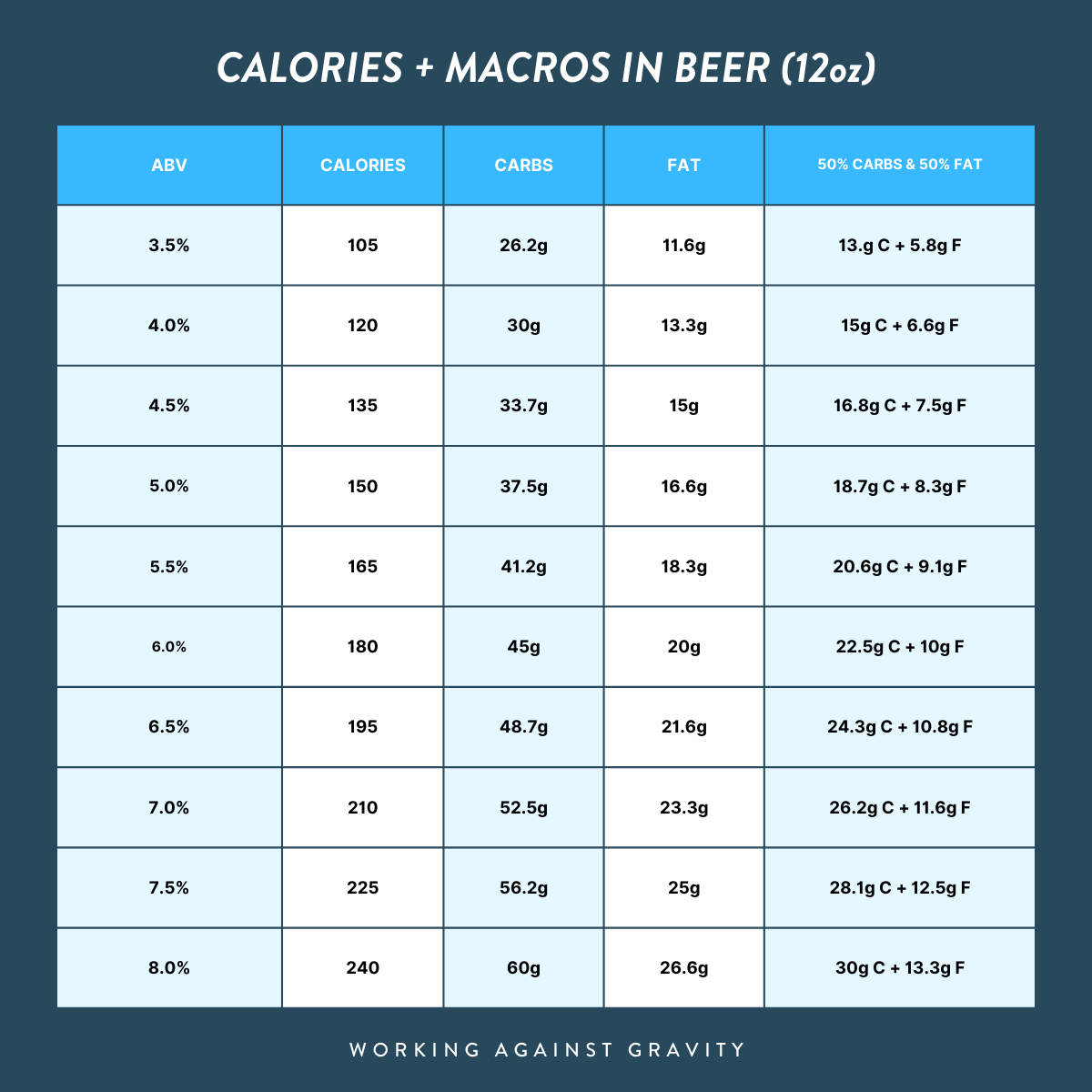
Macro-Friendly Alcohol Options
There are many macro-friendly drink options to enjoy while being aware of your caloric intake. It is all about balance and finding a tasty drink that doesn’t break your macro bank.
Here are some tips to make your drinks more macro-friendly:
- If you are using a “mix” (i.e., margarita mix) in your drink that usually has carbs, fats, and maybe even some protein in it—track that first and separately from the alcohol in your mixed drink.
- Speaking of mixers, limit sugary mixers like juice and sugary soda. Try low/no-cal mixers like Zevia, diet sodas, and sparkling water.
- “Seltzering down” wine or alcoholic seltzers to make that single drink last longer! Poppi Prebiotic Sodas are great for this and very tasty.
Planning ahead, hydrating beforehand, and setting goals for yourself, like drinking a glass of water between alcoholic drinks, will also keep you feeling your best.
Looking for some drink inspiration? Check out our holiday guide for a yummy red sangria recipe! Our Travel Guide also has some refreshing recipe ideas that are sure to be the best macro-friendly beverage out there.
Alcohol Intake and Weight Loss
What if you have weight loss goals? Can you lose weight while drinking? Is it possible to lose fat while drinking beer or to lose weight while drinking wine?
Advertisement
The short and sweet answer, once again: Yes.
Something to keep in mind is that your body prioritizes the digestion of alcohol ahead of anything else you have eaten. Therefore, alcohol will impact your ability to recover properly from a hard week of training. Similarly, it may negatively impact you if you are at a caloric deficit and already low in calories and nutrients. In other words, almost everything else (like fat burning!) takes a backseat as your body handles the alcohol in your system.
Sometimes grabbing a drink with friends is in your goals! At its most basic level, It is not about avoiding social situations or alcohol altogether. Instead, it is all about finding a balance between being deliberate and in control of our decisions. That means being disciplined and saying “no” at certain times. However, it also means having the freedom and making room to have that special birthday drink!
With the support of a one-on-one coach who can help you decide where and when a drink fits into your goals, you can start practicing the balance that feels best for you!
References:
Turoff, Alix (2018 Sept, 18) How Alcohol Can Affect Your Body Composition. InBodyUSA. Retrieved From https://inbodyusa.com/blogs/inbodyblog/how-alcohol-can-affect-your-body-composition/



